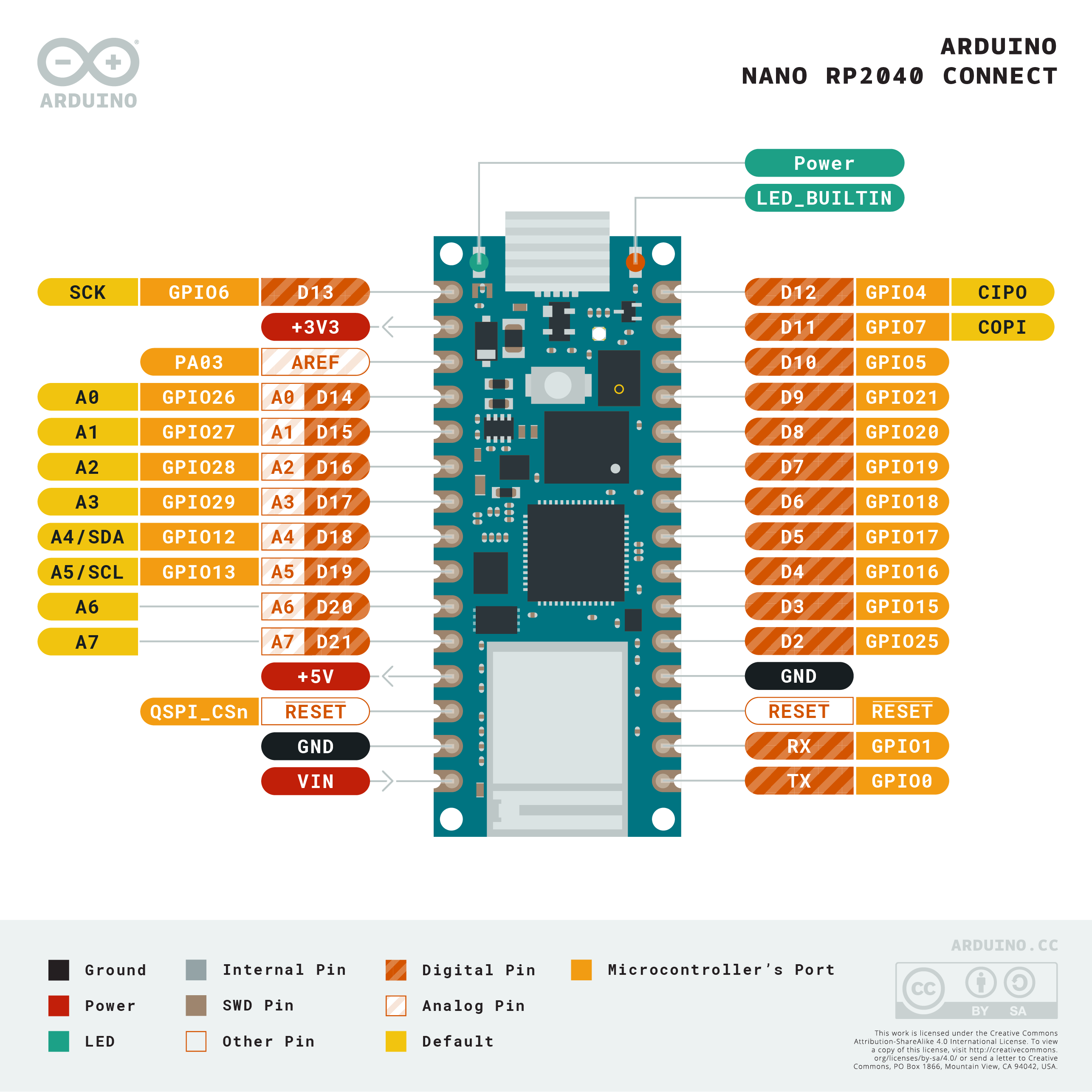

- #Arduino nano pinout funmove how to#
- #Arduino nano pinout funmove serial#
- #Arduino nano pinout funmove software#
- #Arduino nano pinout funmove code#
Typically used to add a reset button to shields which block the one on the board. Bring this line LOW to reset the microcontroller. There are a couple of other pins on the board:

Support I2C (TWI) communication using the Wire library (documentation on the Wiring website). Additionally, some pins have specialized functionality: Analog pins 6 and 7 cannot be used as digital pins. By default they measure from ground to 5 volts, though is it possible to change the upper end of their range using the analogReference() function. The Nano has 8 analog inputs, each of which provide 10 bits of resolution (i.e. When the pin is HIGH value, the LED is on, when the pin is LOW, it's off. There is a built-in LED connected to digital pin 13. These pins support SPI communication, which, although provided by the underlying hardware, is not currently included in the Arduino language. Provide 8-bit PWM output with the analogWrite() function. See the attachInterrupt() function for details. These pins can be configured to trigger an interrupt on a low value, a rising or falling edge, or a change in value.
#Arduino nano pinout funmove serial#
These pins are connected to the corresponding pins of the FTDI USB-to-TTL Serial chip. Used to receive (RX) and transmit (TX) TTL serial data. In addition, some pins have specialized functions: Each pin can provide or receive a maximum of 40 mA and has an internal pull-up resistor (disconnected by default) of 20-50 kOhms. Input and OutputĮach of the 14 digital pins on the Nano can be used as an input or output, using pinMode(), digitalWrite(), and digitalRead() functions. The ATmega328 has 2 KB of SRAM and 1 KB of EEPROM. The ATmega328 has 32 KB, (also with 2 KB used for the bootloader. The power source is automatically selected to the highest voltage source. The Arduino Nano can be powered via the Mini-B USB connection, 6-20V unregulated external power supply (pin 30), or 5V regulated external power supply (pin 27). You can find here your board warranty information. Need any help with your board please get in touch with the official Arduino User Support as explained in our Contact Us page.
#Arduino nano pinout funmove how to#
Need Help?Ĭheck the Arduino Forum for questions about the Arduino Language, or how to make your own Projects with Arduino.
#Arduino nano pinout funmove software#
You can find in the Getting Started with Arduino Nano section all the information you need to configure your board, use the Arduino Software (IDE), and start tinkering with coding and electronics.įrom the Tutorials section you can find examples from libraries and built-in sketches as well other useful information to expand your knowledge of the Arduino hardware and software. If you are looking for a Nano board with similar functionality but also provide additional features, check:įind inspiration for your projects with the Nano board from our tutorial platform Project Hub. It lacks only a DC power jack, and works with a Mini-B USB cable instead of a standard one. It has more or less the same functionality of the Arduino Duemilanove, but in a different package. But if you continue to hold the MPU60-50 forward, the Arduino will continue to take away 5 degrees, in this case, it's every 5/100th of a second! So our servos actually end up moving pretty quickly ! If you find that your servo are moving too fast, you can always swap out the "5" for a smaller number.The Arduino Nano is a small, complete, and breadboard-friendly board based on the ATmega328 (Arduino Nano 3.x). Now, 5 degrees doesn't sound like a lot, and it's not. The last thing we do is tell our servo to move to whatever the value of our position variable happens to be. If you think back to the first few lines of code, we made the value of posY 90, for 90 degrees, but if we take away 5 degrees, we're at 85. We are also telling the Arduino to take 5 away from the value of our posY variable. So if the Pitch value is less than -30, and we haven't hit the limit, we tell the Arduino to print "forward", but that's not all. The second condition checks to see if the servo is already at its minimum position (zero degrees). The first half of our conditional statement checks if our Pitch variable is less than -30, which in this case is the same as learning the MPU60-50 forward. Here we have a conditional statement with two conditions. Int sendData // One element array holding our random number RF24 radio ( CE_PIN, CSN_PIN ) // Activate the Radio void setup ( )

#define CSN_PIN 9 const uint64_t pipe = 0x1 // This is the transmit pipeline
#Arduino nano pinout funmove code#
This code is also compatible with an RF Nano Integer from one RF Nano to a second RF Nano, to show just how Hey guys! This example code is designed to send one random


 0 kommentar(er)
0 kommentar(er)
